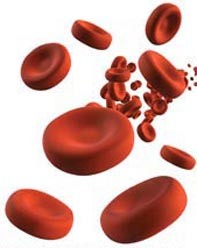Peer Reviewed
Feature Article Haematology
A revised guide to the diagnosis of polycythaemia
Abstract
The diagnosis of polycythaemia has recently been improved by the discovery of a gene mutation that 95% of affected patients possess.
Key Points
- Polycythaemia vera is a myeloproliferative disorder that needs to be distinguished from other causes of an elevated haemoglobin level. A reduction in the plasma volume (relative polycythaemia), an increase in erythropoietin secretion (secondary polycythaemia) and smoking (smoker’s polycythaemia) can all increase the haemoglobin level.
- The diagnosis of polycythaemia vera has been simplified with the finding of a gene mutation present in 95% of patients with this condition.
- If a patient’s haemoglobin level is borderline between normal and high, look for possible clinical causes such as dehydration or smoking. Remember that such findings may be normal in young men.
- A high haemoglobin level is more important if intercurrent vascular disease is present because polycythaemia vera is a risk factor for both arterial and venous thrombosis.
Purchase the PDF version of this article
Already a subscriber? Login here.

